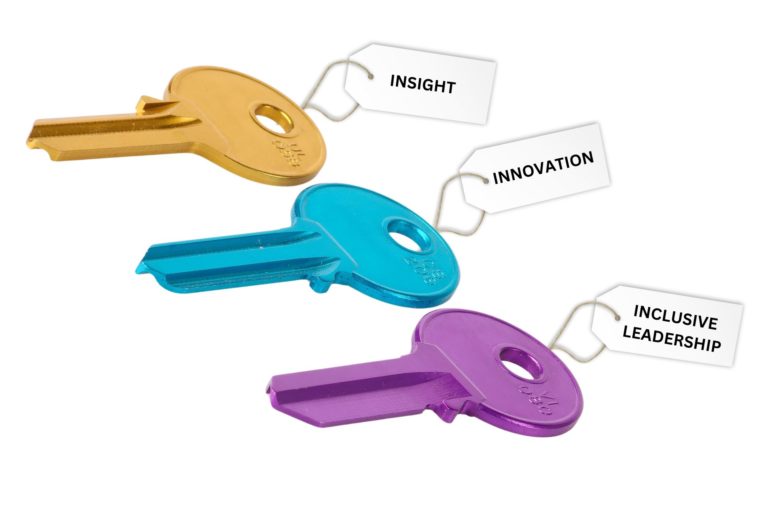The title of this week’s post might surprise you. After all, the hospitality industry should be highly customer centric, as it relies on satisfying its guests.
However, it can learn a lot from consumer packaged goods (FMCG/CPG), as I shared with industry experts at a Faculty Day of one of the leading hospitality schools in Switzerland. Having spent most of my career in consumer goods, I was invited to share what the hospitality industry could learn from the industry. From the reactions at the end of my talk it seems that the answer is a lot!
It might surprise you, but the two industries have a number of similarities. They both (should) have their customers at their heart. And they are both founded on pleasing and hopefully delighting their clients in the quality of the products and services they offer.
During my presentation, I shared many ideas; here are a few of the points I covered:
#1. From ROI / ROR to ROE
There has been a lot of discussion in the past few years about the need to move from a return on investment to a return on relationships. While I agree with the importance of relationships, I believe that what we should be talking about is engagement. Despite many books touting the need for our customers to “Love” our brands, in reality, I’m not sure that any of us want to have a deep relationship with brands.
The relationship is based on more than just the brand. It is founded on trust and confidence in the product, the brand’s website and their engaging communications. Think Coca Cola and Red Bull as great examples of this.
#2. Build Relationships with Strangers
The hospitality industry is based on serving and satisfying its guests. But in today’s connected world it also needs to consider people who are currently strangers – but could potentially become guests. These may include the friends of past guests, who have heard about the hotel or restaurant and are interested in visiting it for themselves.
One good example of this, but I know many hotels are also doing it, is the Rosewood Mayakoba resort in Mexico. This wonderful hotel encourages its guests to photograph their experiences during their stay at the resort and then to post them on Facebook.
This not only provides free publicity for the hotel, but also enables it to start engaging future guests before they even arrive. In addition, the posts will certainly have a positive influence on website visitors. And the guests who publish their photos, will have an even stronger positive impact on their friends and followers. After all, they will more than likely have similar tastes and desires.
#3. Value is more Important than Price
Having additional control of our lives today, means that customers are re-evaluating what they are offered. They have higher expectations and are more discerning in their choices. They expect recognition at every touchpoint, even if in reality their decisions are influenced by their peers, more than by traditional marketing.
In addition, the internet enables us to compare multiple offers, so we are far less interested in bundled propositions than we once were. Today we often prefer to decide what is best value for us personally, by buying individual elements for our very personalised vacations. For example, we may overspend on experiences and then choose a more modest hotel and car rental. Each buyer will make choices upon their individual value perceptions.
#4. Renovation is more than Buildings
Most CPG companies have annual targets for Innovation & Renovation, sometimes 30% or more of annual revenue. They also have mid-term innovation pipelines which can include partnerships in joint ventures with what were previously only competitors. These help each partner, by building on their individual talents and enabling them to develop better products and services.
To improve customer centricity in hospitality, innovation can no longer be purely physical or rational; we need to consider more emotional and relational ways to satisfy. The Rosewood Mayakoba resort, already mentioned above, is one good example of this; check the link to see the latest photos published on their Facebook page.
The Art Series Hotels are another example of how well they excel at understanding their guests. Their unique offer is called Art Series Overstay Checkout, and means that if no guest is checking into your room the next day, you can stay a few extra hours or even days for free.
#5. Loyalty is never really Won
One of the reasons that I believe we need to work on building engagement and in all industries, not just hospitality, is because customer demands are constantly evolving. What satisfied them yesterday can bore or even disappoint today.
To acquire and retain our customers, we need to be constantly upgrading our products and services, so that they will be surprised and delighted. This also means that loyalty is much less long-term than in the past and lifetime value is now measured in months or a few years, rather than in decades.
#6. Dialogue don’t just Communicate
In today’s connected world, customers want a say in not only what they consume, but also where, when and how they are marketed to. They want the chance to inform companies about what they want to buy and expect a rapid resolution to any queries or complaints they may have.
According to a recent Edison Research, 20% of respondents expect a company to answer to their social media posts within 15 minutes, 42% within the hour! That means that 24/7 monitoring for all organisations is now essential if we are not to disappoint are most engaged customers.
These are just six of the many ideas I shared during my presentation. If you are interested in seeing the full talk, you can find it on SlideShare here.
Are you struggling to improve your own customer centricity? Whatever people-facing industry you are in, we would welcome the chance to support and catalyse your efforts. Please check out our website for more information on our training and consulting offers, and then contact us here.
This post was first published on C3Centricity in 2013 and has been regularly updated since.
C³Centricity uses images from Pizabay.com






